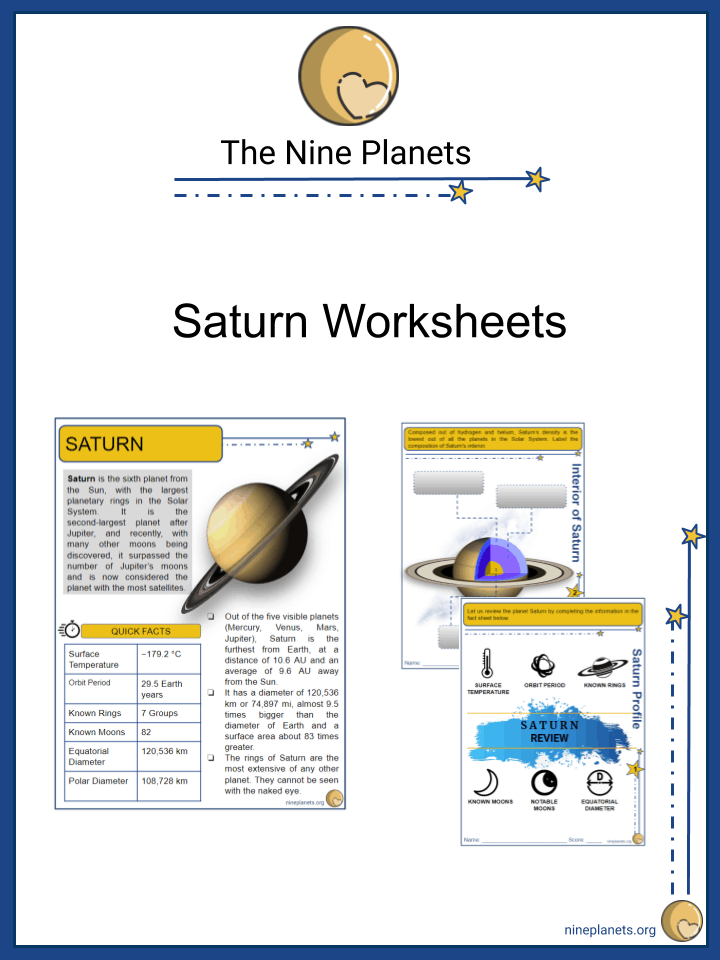Looking for fun activities to teach kids about the planet Saturn?
This premium worksheet bundle contains a printable fact file and 10 fun and engaging worksheets to challenge your students and help them learn about Saturn.
The planet Saturn is named after the Roman god of agriculture. In Greek mythology, he is known as Cronus, the father of Zeus (Jupiter). Saturn is the root of the English word “Saturday.”
Key Facts & Summary
- Saturn is the sixth planet from the Sun with the largest planetary rings in the Solar System.
- It is the second-largest planet in the Solar System after Jupiter.
- Saturn has a radius of 58.232 kilometers / 36.183 miles and a diameter of 120.536 km / 74.897 mi.
- The surface area of Saturn is 83 times greater than Earth.
- Saturn is the King of the Moons, having a total of 82 confirmed moons. There are probably more out there.
- The largest moon of Saturn is named Triton, and it is the second-largest moon in the Solar System after Jupiter’s moon Ganymede. Triron is much bigger than even the planet Mercury.
- Periodic storms are present on Saturn and they are large enough to be seen from Earth. They are named White Spots.
- Saturn doesn’t have a solid surface. It is enveloped by swirling gases and liquids the further down you go.
- It is possible that Saturn may have a core, it would be at least twice the size of Earth and it would be comprised out of metals like iron, and nickel.
- The temperature on Saturn’s upper atmosphere is on average at around -175 degrees Celsius / -285 degrees Fahrenheit. This is quite cold for a gas giant at least. However, below its clouds, it gets considerably hotter.
- Saturn is the most oblate planet in the Solar System. Its equatorial diameter is greater than the planet’s polar diameter. If you look at Saturn through a telescope, it would appear flattened.
- Saturn has the lowest density of all the planets. It is lighter than water and if placed on it, the planet would float.
- The low density of Saturn is attributed to its composition. The planet is largely made up of gases such as hydrogen and helium.
- Saturn’s composition together with its atmosphere influences its color, giving it a brownish-yellow appearance.
Saturn is the sixth planet from the Sun and the second-largest planet in the Solar System after Jupiter. Saturn is the king of the moons because it has the most moons out of any planet, 82, and it may have even more.
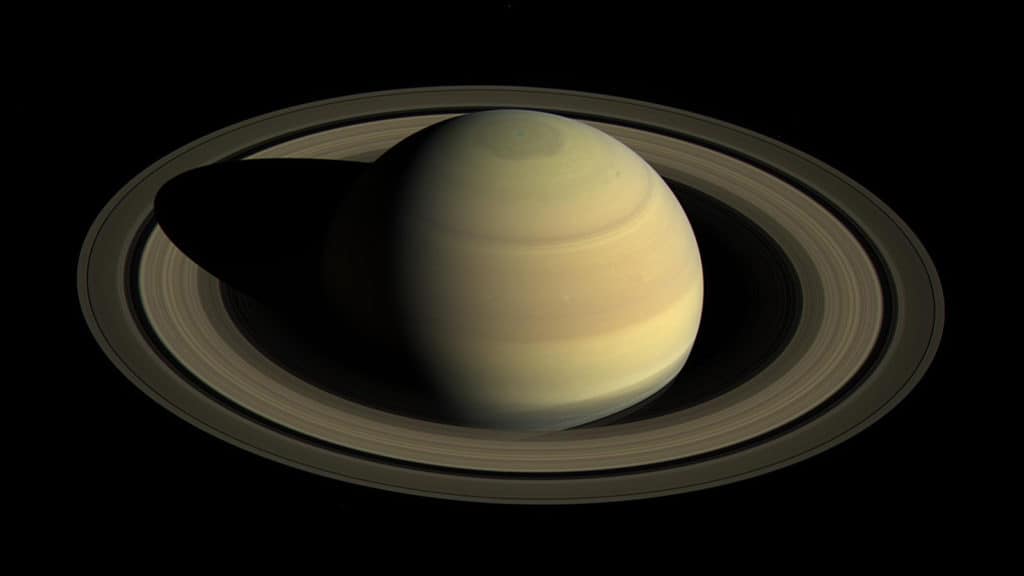
Though it is the most distant of the visible planets – planets that can be seen without the need of a telescope or binoculars – a striking feature has always been noted, its rings.
Saturn is nicknamed the “Ringed Planet” – it has more than 30 ring systems around it. It isn’t the only planet with rings, but it definitely has the most beautiful and visible ones.
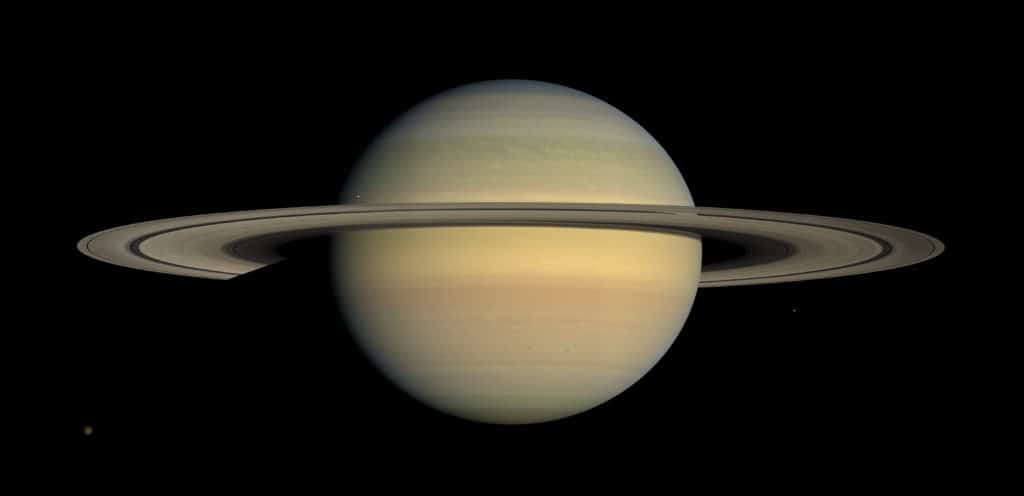
The first person to observe Saturn through a telescope was Galileo Galilei in the 1600s. Galileo wasn’t sure of what he was seeing, and at first thought the planet had handles, and then he believed he observed three planets, when in fact, they were the rings of Saturn.
Structure and Composition
The rings of Saturn are made out of chunks of ice and rock. Their exact origin is unknown. These rings are very bright and are composed of many small particles that circle Saturn at their own speeds.
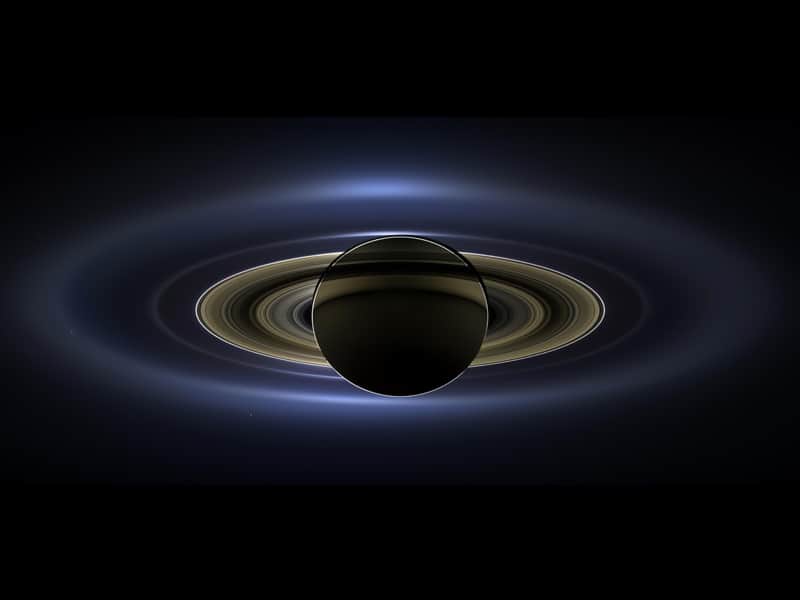
These objects range in size from a centime to several meters, and some few are kilometer-sized.
Saturn itself is mostly a ball of hydrogen and helium, and this is why it is known as a gas giant like Jupiter. Like Jupiter, Saturn has bands/clouds but much fainter, some of the spots in those bands are areas where big storms occur.
Time on Saturn
A day on Saturn goes by very fast. It takes only 10.7 hours for Saturn to spin once – a day. A year on Saturn is actually different because it is very far from the Sun.
Saturn circles the Sun once every 29 Earth years – thus one Saturnian year.
Fun Facts:
- Galileo Galilei first observed Saturn in 1610, however, his telescope failed to observe the planet’s rings. The discovery of the rings was made by Christiaan Huygens in 1659.
- Out of the five visible planets ( Mercury, Venus, Mars, Jupiter ), Saturn is the most distant from Earth. It is around 10 times farther away from us than we are from the Sun.
- Light takes about 1 hour and 29 minutes to travel from Saturn and then arrive at us.
- The presence of ammonia gives Saturn a yellow appearance, ammonia hydrosulfide – orange, and water – white.
- Since Saturn’s axial tilt is similar to Earth, the southern and northern hemispheres are heated differently. Much of these variations in temperature are horizontal.
- The rings of Saturn extend up to 282.000 km / 175.000 mi from the planet.
- The particles that make up the rings of Saturn range from the size of small dust to as big a house, or even a mountain.
- Saturn’s ring system is divided into 7 groups: D ring, C ring, B ring, A ring, F ring, G ring, and E ring. Together, they are as wide as 4.5 Earths put side by side.
- You could fit 764 Earths inside Saturn, and almost 1.600 Saturn’s could fit into the Sun.
- Some believe that the Great Flood that occurred on Earth was caused by a moment in time when Saturn and Jupiter came close to one another.
- The winds on Saturn are the second fastest among the Solar System’s planets, after Neptune’s.
Size and Comparison
Saturn has a radius of 58.232 kilometers / 36.183 miles and a diameter of 120.536 km / 74.897 mi. It is the second-largest planet in the Solar System.

The biggest planet of the Solar System, Jupiter, has 1.2 times the diameter of Saturn. Satururn’s diameter is around 10 times bigger than Earth’s and Venus’s.
It is more than two times bigger than Neptune and Uranus, but when it comes to Mars, it has 17.1 times its diameter. However, Mercury is the smallest planet, and Saturn has more than 23 times its diameter.
Trivia
The rings of Saturn will disappear
Scientists believe that Saturn will lose its rings in about 100 million years. The rings are pulled into Saturn by the planet's gravity as a dusty rain of ice.
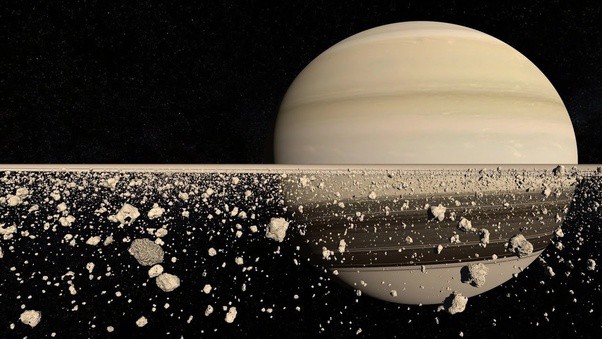
These particles are also under the influence of Saturn’s magnetic field and the event is often called Ring Rain.
The many names of Saturn
Many cultures across the world have given their own names to Saturn. In Greek, Saturn was known as Phainon while in Hindu astrology, it was known as Shani, a deity that judges the good and bad deeds done in life.
In the Chinese and Japanese cultures, Saturn was designated as the Earth Star.
Visitors of Saturn
Only four spacecraft have visited Saturn:
- NASA’s Pioneer 11 in 1979
- NASA’s twin Voyager 1 & 2 in 1980 and 1981
- The international Cassini spacecraft in 2004.
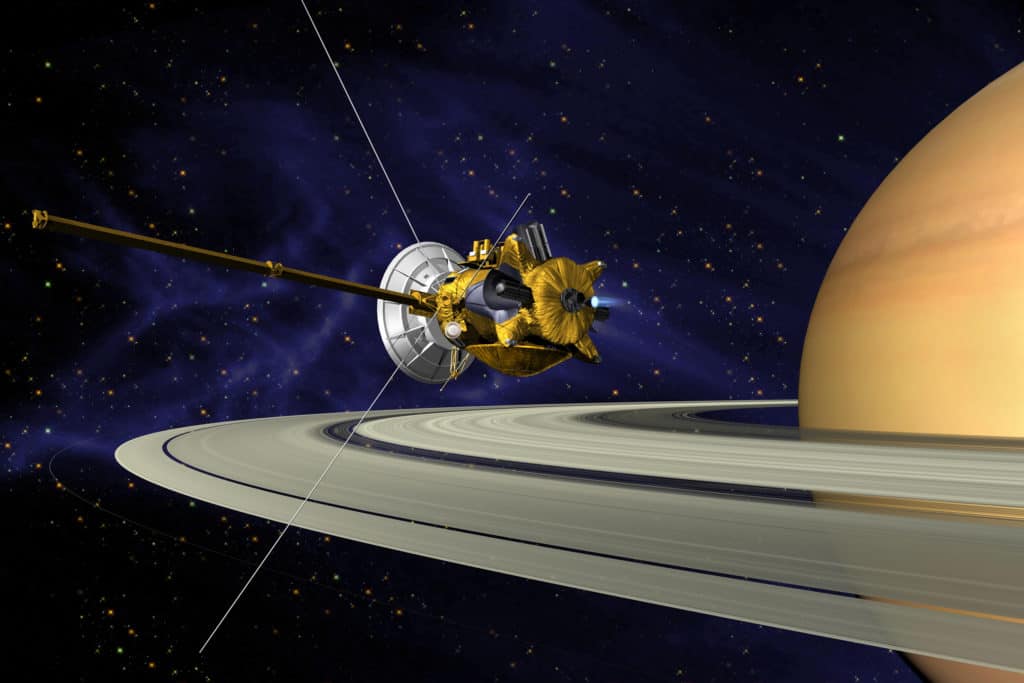
The spacecraft Cassini studied Saturn for about 13 years. After it completed its mission, it was intentionally vaporized in Saturn’s atmosphere in 2017.
The eeriest radio signals
Saturn has the eeriest radio emissions in the Solar System. The planet’s sounds can be found and listened to on the internet, and they are indeed a bit disturbing.
Other Characteristics
Saturn has a thick atmosphere, but the pressure is so strong that it squeezes gas into a liquid. Winds are very powerful in the upper atmosphere and reach incredible speeds. In fact, they are the second fastest winds present on any planet.
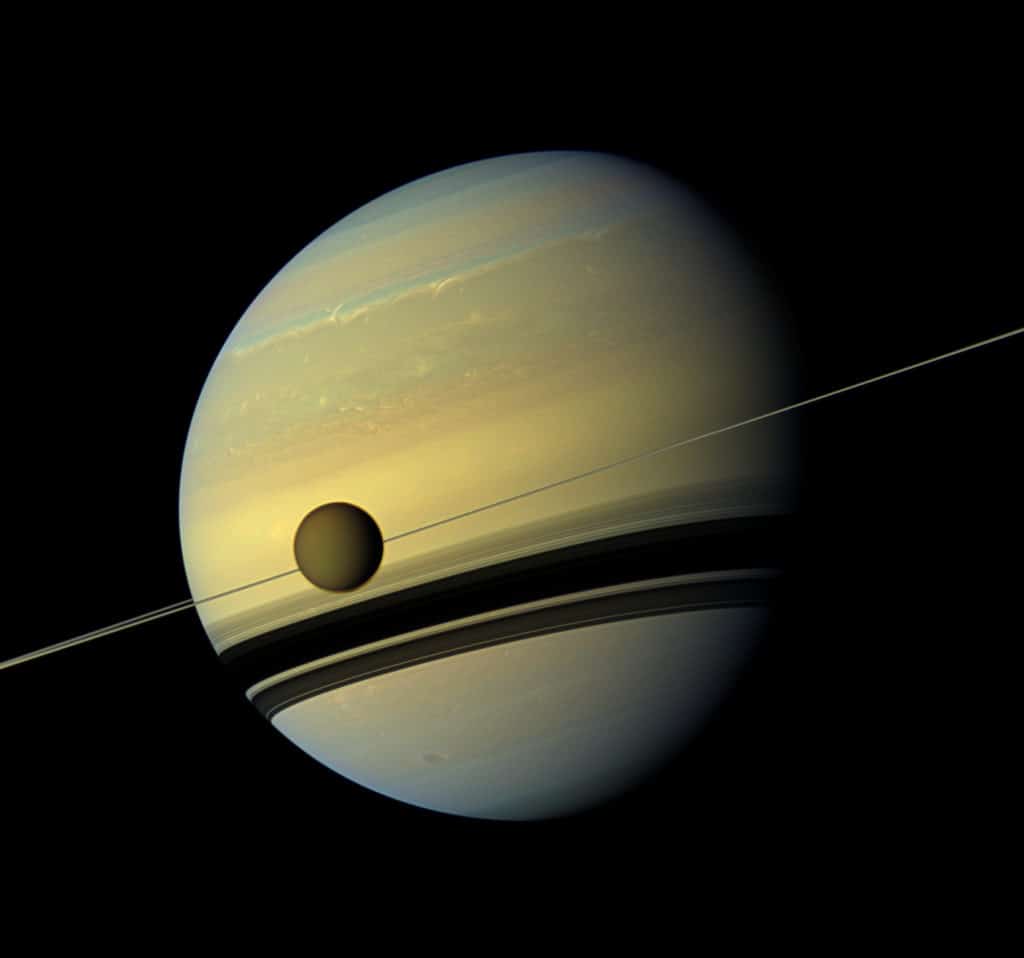
Since it is primarily made out of gases and liquid, Saturn isn’t very dense. If you could put Saturn on water, it would float. The closest planets to Saturn are Jupiter and Uranus.
The planet is bright enough that it can be seen without a telescope or a pair of binoculars, but if you look at it through a telescope, it will appear squished since its made out of gas and liquid and it spins very quickly.
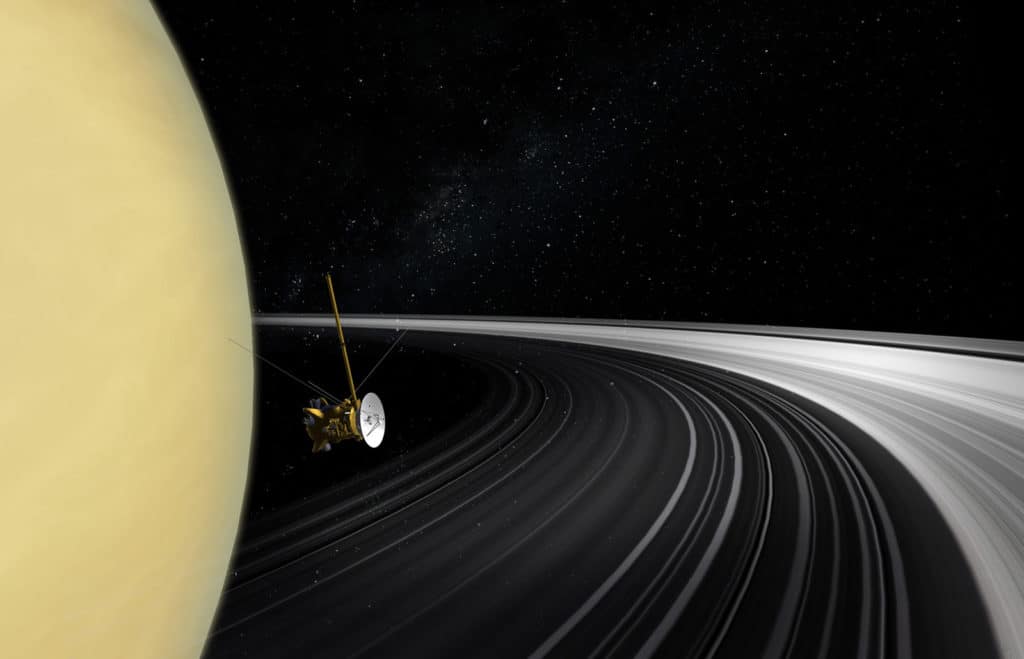
Saturn’s outer moons are also visible through the use of a telescope. The planet has recently gained the title of King of the Moons since now 82 moons have been confirmed. Before this, it was Jupiter who was king.
Though life cannot exist on Saturn because it doesn’t have a surface, its moons Titan and Enceladus have internal oceans. They could possibly hold life. Some missions are planned to visit those moons soon.
Scientists believe that Saturn will lose its rings in about 100 million years.
Saturn Notes
- Saturn is a gas giant primarily made out of gases and liquid. It doesn’t have a surface.
- Saturn is the planet with the most moons, 82, and the planet with the most beautiful ring systems.
- Saturn was known to the ancients, some of them considered Saturn as bein a star rather than a planet.
- Saturn is the sixth planet from the Sun and the second-largest.
- Some of the spacecraft that visited Saturn are Pioneer 11, Cassini, and Voyager 1 and 2.
- The materials that makeup Saturn are lighter than water, and as such, if you would place Saturn in a pond, it would float.
Sources:
[1.] Wikipedia
[2.] NASA
Image sources:
- https://solarsystem.nasa.gov/system/stellar_items/image_files/38_saturn_1600x900.jpg
- https://solarsystem.nasa.gov/system/news_items/main_images/12885_PIA11141.jpg
- https://solarsystem.nasa.gov/system/feature_items/images/152_saturn_carousel_2.jpg
- https://cdn.mos.cms.futurecdn.net/rCdTVsPesASiv3JeVyhHsa-1200-80.jpg
- https://qph.fs.quoracdn.net/main-qimg-34f334d37c29b3e147aa1cd7f3ea6e93
- https://www.nasa.gov/sites/default/files/thumbnails/image/682400main_pia14922_full_full.jpg
- https://solarsystem.nasa.gov/system/news_items/main_images/813_cassini20190117-nasa.jpg
- https://upload.wikimedia.org/wikipedia/commons/b/b2/Cassini_Saturn_Orbit_Insertion.jpg

